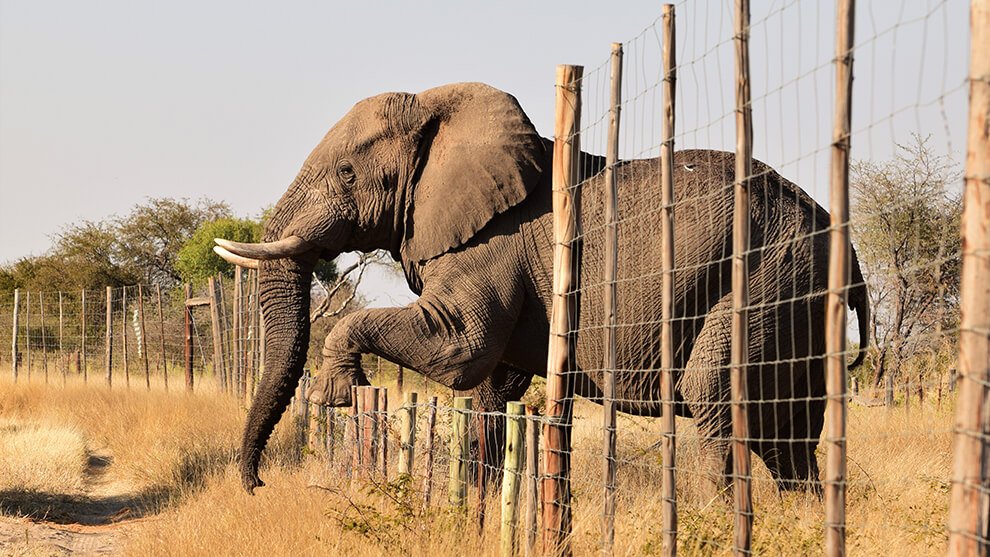The Majestic Giants of Africa
African elephants, the largest land mammals on Earth, roam the vast savannas and dense forests of sub-Saharan Africa, embodying strength, intelligence, and deep familial bonds. These keystone species shape their ecosystems by creating waterholes, dispersing seeds, and maintaining biodiversity. Yet, their survival hangs in the balance, threatened by poaching, habitat loss, and human-elephant conflict. Advocating for their protection is not just about saving a species—it’s about preserving the heartbeat of Africa’s wild landscapes.
Why African Elephants Matter
Ecological Engineers of the Wild
Elephants are nature’s architects, reshaping landscapes as they forage, dig, and roam. By uprooting vegetation and digging waterholes, they create habitats for smaller species, from birds to antelopes. Their seed-dispersal habits help regenerate forests, ensuring biodiversity thrives. Without elephants, ecosystems like Uganda’s Murchison Falls Park have seen grazing grasses vanish, causing cascading losses for other wildlife.
Cultural and Economic Significance
Elephants are symbols of African heritage, drawing millions in ecotourism revenue—$25 million annually in Kenya alone. Their presence supports local economies, funds conservation, and fosters pride in communities. From the Samburu people in Kenya to the Maasai in Tanzania, elephants are woven into cultural narratives, representing wisdom and resilience. Protecting them safeguards both livelihoods and legacies.
The Crisis Facing African Elephants
A Devastating Decline
Once numbering up to 26 million in the 18th century, African elephant populations have plummeted to roughly 415,000 today. The African savanna elephant is listed as Endangered, while the forest elephant is Critically Endangered on the IUCN Red List. Poaching for ivory and habitat loss have driven declines of up to 90% in some regions, like Zambia’s Luangwa-Zambezi Valley, since the 1960s.
Poaching: A Relentless Threat
The illegal ivory trade remains a primary driver of elephant mortality, with an estimated 20,000 elephants killed annually—about 55 per day. Despite international bans like CITES, demand in Asian markets fuels sophisticated poaching networks. In South Sudan, 97% of the elephant population has been wiped out in less than 50 years, largely due to ivory poaching.
Habitat Loss and Fragmentation
As human populations expand, elephant habitats shrink. From 3 million square miles in 1979 to just over 1 million by 2007, their range has dwindled due to agriculture, urbanization, and infrastructure. This forces elephants into smaller, isolated patches, increasing human-elephant conflict and disrupting migration routes critical for breeding and survival.
Human-Elephant Conflict
When elephants wander into farmlands, they can destroy crops, threatening farmers’ livelihoods. This often leads to retaliatory killings, with both humans and elephants suffering. In Kenya’s Meru Conservation Area, crop raiding fuels negative attitudes toward elephants, putting their future at risk. Innovative solutions like beehive fences are helping, but more action is needed.
Current Protections and Their Limitations
International Frameworks: CITES and Beyond
The Convention on International Trade in Endangered Species (CITES), established in 1973, regulates ivory trade. African elephants were listed under Appendix I in 1990, banning international trade, though some populations in Botswana, Namibia, and Zimbabwe were downlisted to Appendix II in 1997, allowing limited trade. While CITES has curbed illegal ivory flows, enforcement remains inconsistent due to corruption and limited resources.
National Legislation and Challenges
The U.S. Endangered Species Act (ESA) and India’s Forest Conservation Act provide legal frameworks, but enforcement varies. The U.S. Fish and Wildlife Service’s African Elephant Conservation Fund, enacted in 1988, supports anti-poaching and habitat restoration, yet funding gaps persist. A 2024 study estimated $1.5 billion annually is needed to stabilize elephant populations across Africa.
Conservation Successes and Gaps
Efforts like Zambia’s Luangwa-Zambezi Valley recovery, where elephant numbers grew from 450 to 20,000 through community engagement and anti-poaching patrols, show progress. However, failures in Central Africa, where forest elephants lost 62% of their population in a decade, highlight the need for stronger governance and funding.
Strategies for Greater Protection
Strengthening Anti-Poaching Efforts
Anti-poaching units, equipped with advanced surveillance and trained rangers, are critical. In Zakouma National Park, Chad, African Parks reduced poaching to near zero, allowing elephant populations to rebound. Expanding such programs across the 37 elephant range states requires international funding and local collaboration.
Habitat Restoration and Corridors
Creating wildlife corridors reconnects fragmented habitats, enabling safe migration. Simple bridges over irrigation canals or larger land stretches in areas like KAZA, home to 225,000 elephants, have proven effective. Restoration projects, like reforestation in Sumatra’s Thirty Hills, also protect critical habitats.
Mitigating Human-Elephant Conflict
Innovative deterrents like beehive fences, which scare elephants away due to their fear of bees, have reduced crop raiding by up to 86% in Kenya. “Chili bombs,” made from dung and hot chili, are another low-cost solution. Community-based programs, like those by the African Wildlife Foundation, empower locals to coexist with elephants.
Reducing Ivory Demand
Campaigns like the WWF’s work with TRAFFIC and the U.S.’s 96 Elephants initiative aim to curb ivory demand through education and stricter regulations. The 2016 U.S. federal ivory ban and China’s 2017 ban were milestones, but Japan’s market for “pink ivory” from forest elephants remains a challenge.
Community Engagement and Economic Incentives
Involving local communities is key. Programs like African Parks’ employment of 3,219 locals in 2020 and the Namunyak Wildlife Trust’s game guard initiatives provide jobs and foster stewardship. Ecotourism revenue-sharing models, as seen in Botswana, ensure communities benefit from elephant conservation.
Comparing Conservation Approaches
| Approach | Strengths | Weaknesses |
|---|---|---|
| Anti-Poaching Patrols | Reduces illegal killing; proven success in areas like Zakouma | High costs; requires sustained funding and training |
| Wildlife Corridors | Restores migration routes; supports genetic diversity | Land acquisition challenges; conflicts with human development |
| Beehive Fences | Low-cost; effective up to 86%; provides income via honey sales | Limited scalability; requires community buy-in |
| Ivory Trade Bans | Reduces demand; strengthens legal frameworks | Enforcement gaps; persistent black markets in some regions |
| Community Programs | Builds local support; creates economic benefits | Slow to implement; success depends on cultural and economic context |
Pros and Cons of Current Efforts
Pros:
- Increased global awareness through campaigns like “I Will Not Be Silent.”
- Success stories in Zambia and Botswana show recovery is possible.
- Innovations like GPS tracking and beehive fences offer practical solutions.
Cons:
- Funding shortages limit scalability of anti-poaching and habitat restoration.
- Corruption and weak governance undermine enforcement in some regions.
- Human-elephant conflict persists, fueling negative attitudes.
The Role of Technology in Conservation
GPS Tracking and Real-Time Monitoring
Save the Elephants’ STE Wildtracks App uses GPS collars to monitor elephant movements, aiding in corridor planning and rapid response to distress. This data-driven approach has shifted international policies toward better protection. Expanding access to such technology could enhance conservation across Africa.
Drones and Surveillance
Drones provide aerial monitoring of remote habitats, deterring poachers and tracking herds. In Pendjari National Park, Benin, drones helped protect 1,700 elephants through real-time surveillance. However, high costs and technical expertise requirements limit widespread use.
Personal Stories: The Human-Elephant Connection
I once met a ranger in Kenya’s Amboseli National Park who shared a story about a matriarch elephant named Echo. She led her herd through drought, remembering waterholes from decades past, saving her family. Her intelligence and leadership left a lasting impression, reminding me why these animals are worth fighting for. Across Africa, communities share similar tales, from Maasai elders respecting elephants as kin to farmers learning to coexist through beehive fences. These stories humanize the crisis, showing that protecting elephants is about preserving shared histories.
People Also Ask (PAA)
What is the biggest threat to African elephants?
Poaching for ivory is the primary threat, killing around 20,000 elephants annually. Habitat loss and human-elephant conflict also drive declines, with populations dropping 60–80% in some regions over recent decades.
How can I help protect African elephants?
Support conservation organizations like WWF or Save the Elephants through donations or advocacy. Avoid ivory products, choose responsible ecotourism, and spread awareness about their plight. Visit www.worldwildlife.org for actionable steps.
Where are African elephants found?
African elephants inhabit 37 countries across southern, eastern, western, and central Africa, in habitats from savannas to forests. Key areas include Kenya’s Amboseli, Zambia’s Luangwa-Zambezi, and Botswana’s Okavango Delta.
What tools are best for elephant conservation?
GPS collars, drones, and beehive fences are effective. Organizations like African Parks use these for monitoring and conflict mitigation. Support projects via www.africanelephantfund.org to fund such tools.
FAQ Section
Why are African elephants endangered?
African elephants face endangerment due to poaching for ivory, habitat loss from human expansion, and retaliatory killings from human-elephant conflict. The savanna elephant is Endangered, and the forest elephant is Critically Endangered, with populations declining up to 90% in some areas.
How effective are beehive fences?
Beehive fences deter elephants up to 86% of the time during peak crop seasons, as elephants fear bees. They’re cost-effective and provide communities with honey-based income, though scalability depends on local training and resources.
What role do elephants play in ecosystems?
As keystone species, elephants maintain ecosystems by creating waterholes, dispersing seeds, and clearing vegetation. Their absence can lead to collapses in biodiversity, as seen in Uganda where grazing grasses vanished without them.
How can communities benefit from elephant conservation?
Communities gain from ecotourism revenue, jobs as rangers or guides, and sustainable practices like honey production from beehive fences. Programs in Botswana and Zambia show how conservation can boost local economies.
Are ivory bans working?
Ivory bans, like those in the U.S. and China, have reduced legal trade, but illegal markets persist, especially in Japan. Stronger enforcement and demand reduction campaigns are needed to close loopholes.
A Call to Action
African elephants are more than icons—they’re vital to ecosystems, cultures, and economies. Their decline is a warning of broader environmental collapse, but their recovery is within reach. By supporting anti-poaching, habitat restoration, and community-driven solutions, we can ensure these giants roam Africa for generations. Visit www.savetheelephants.org to donate, advocate, or learn more. Let’s stand together to protect the heartbeat of the wild.





